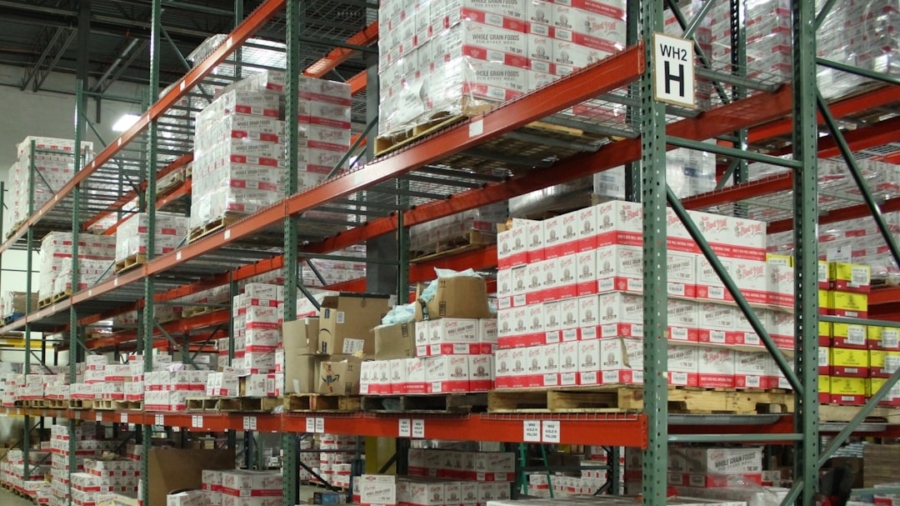The Internet of Things (IoT) has emerged as a transformative force across various sectors, revolutionizing how data is collected, analyzed, and utilized. At its core, IoT refers to the interconnection of everyday devices to the internet, enabling them to send and receive data. This connectivity allows for real-time monitoring and management of systems, which is particularly crucial in the context of environmental sustainability.
One of the most pressing issues facing industries today is the need to track and reduce greenhouse gas emissions. As global awareness of climate change intensifies, businesses are increasingly held accountable for their environmental impact. IoT technology offers innovative solutions for emissions tracking, providing organizations with the tools necessary to monitor their carbon footprints effectively.
Emissions tracking involves measuring the release of greenhouse gases into the atmosphere, which is essential for understanding and mitigating climate change. By leveraging IoT devices, companies can gather precise data on emissions across their supply chains, from production to transportation and distribution. This data-driven approach not only aids in compliance with regulatory requirements but also enhances corporate responsibility and sustainability initiatives.
As industries strive to meet ambitious carbon reduction targets, the integration of IoT into emissions tracking systems represents a significant step toward achieving these goals.
Key Takeaways
- IoT technology plays a crucial role in tracking emissions in supply chains by providing real-time data and insights.
- Emissions in supply chains have a significant impact on the environment and public health, making it essential to track and reduce them.
- IoT technology is used to track emissions through sensors, GPS tracking, and data analytics, enabling better decision-making and emissions reduction strategies.
- Using IoT for emissions tracking offers benefits such as improved transparency, cost savings, and the ability to meet regulatory requirements.
- Challenges and limitations of IoT in emissions tracking include data security concerns, high implementation costs, and the need for standardization and interoperability.
The Impact of Emissions in Supply Chains
The impact of emissions in supply chains is profound and multifaceted. Supply chains are responsible for a substantial portion of global greenhouse gas emissions, with estimates suggesting that they account for over 80% of a company’s total emissions in many sectors. This includes emissions from raw material extraction, manufacturing processes, transportation, and even product disposal.
The complexity of supply chains often obscures visibility into where emissions are generated, making it challenging for companies to implement effective reduction strategies.
Moreover, the repercussions of high emissions extend beyond environmental concerns; they can also affect a company’s bottom line.
Regulatory bodies worldwide are tightening emissions standards, leading to potential fines and penalties for non-compliance. Additionally, investors are increasingly favoring companies with robust sustainability practices, as they are perceived as lower-risk investments. Failure to address emissions can result in reputational damage and loss of market share.
Therefore, understanding and managing emissions within supply chains is not just an ethical imperative but also a strategic business necessity.
How IoT Technology is Used to Track Emissions

IoT technology plays a pivotal role in tracking emissions by enabling real-time data collection and analysis across various stages of the supply chain. Sensors and connected devices can be deployed at critical points to monitor emissions continuously. For instance, in manufacturing facilities, IoT sensors can measure the output of carbon dioxide and other greenhouse gases during production processes.
This data can then be transmitted to centralized systems for analysis, allowing companies to identify inefficiencies and areas for improvement. In addition to manufacturing, IoT technology can be utilized in transportation logistics to track emissions associated with freight movement. GPS-enabled devices can monitor vehicle routes and fuel consumption, providing insights into how transportation choices impact overall emissions.
By analyzing this data, companies can optimize their logistics operations, selecting more efficient routes or transitioning to greener transportation options such as electric vehicles. Furthermore, IoT platforms can integrate data from various sources, including energy consumption metrics from facilities and transportation emissions data, creating a comprehensive view of a company’s carbon footprint.
Benefits of Using IoT for Emissions Tracking
The benefits of employing IoT technology for emissions tracking are numerous and significant. One of the primary advantages is the ability to obtain real-time data, which allows organizations to respond swiftly to changes in emissions levels. This immediacy enables proactive management strategies rather than reactive measures after issues have been identified.
For example, if a manufacturing plant experiences an unexpected spike in emissions due to equipment malfunction or inefficiency, real-time monitoring can alert managers to take corrective action immediately. Another key benefit is enhanced accuracy in emissions reporting. Traditional methods of tracking emissions often rely on estimates or periodic assessments that may not reflect actual performance accurately.
In contrast, IoT devices provide precise measurements that can be aggregated and analyzed over time. This level of accuracy not only aids in compliance with regulatory requirements but also builds trust with stakeholders who demand transparency regarding a company’s environmental impact. Additionally, accurate data can inform strategic decision-making, enabling organizations to set realistic targets for emissions reduction based on empirical evidence.
Challenges and Limitations of IoT in Emissions Tracking
Despite its many advantages, the implementation of IoT technology for emissions tracking is not without challenges and limitations. One significant hurdle is the initial investment required for deploying IoT infrastructure. Companies must consider the costs associated with purchasing sensors, establishing connectivity solutions, and integrating new systems with existing operations.
For smaller businesses or those operating on tight margins, these upfront costs can be prohibitive.
The vast amounts of data generated by IoT devices require robust analytics capabilities to extract meaningful insights.
Organizations must invest in data storage solutions and analytical tools capable of processing this information efficiently. Additionally, ensuring data security is paramount; as more devices connect to the internet, the risk of cyberattacks increases. Companies must implement stringent cybersecurity measures to protect sensitive emissions data from breaches that could compromise their operations or reputation.
Case Studies of Successful Implementation

Several organizations have successfully implemented IoT technology for emissions tracking, showcasing its potential benefits across various industries. One notable example is Unilever, a global consumer goods company committed to sustainability. Unilever has integrated IoT sensors into its manufacturing processes to monitor energy consumption and emissions in real time.
By analyzing this data, the company has identified opportunities for energy efficiency improvements that have led to significant reductions in greenhouse gas emissions across its production facilities. Another compelling case study is that of Maersk, one of the world’s largest shipping companies. Maersk has adopted IoT technology to track fuel consumption and emissions from its fleet of vessels.
By utilizing GPS-enabled sensors and advanced analytics platforms, Maersk has optimized its shipping routes and improved fuel efficiency significantly. This initiative not only reduces emissions but also results in cost savings for the company. These examples illustrate how organizations can leverage IoT technology to enhance their sustainability efforts while simultaneously improving operational efficiency.
Future Trends and Innovations in IoT Emissions Tracking
As technology continues to evolve, several trends and innovations are likely to shape the future of IoT emissions tracking. One emerging trend is the integration of artificial intelligence (AI) with IoT systems. AI algorithms can analyze vast datasets generated by IoT devices to identify patterns and predict future emissions trends more accurately.
This predictive capability enables organizations to implement proactive measures rather than merely reacting to past performance. Additionally, advancements in blockchain technology may enhance transparency and accountability in emissions tracking. By utilizing blockchain for data storage and sharing, companies can create immutable records of their emissions data that stakeholders can trust.
This level of transparency could facilitate collaboration among supply chain partners working toward common sustainability goals. Furthermore, as renewable energy sources become more prevalent, IoT technology will play a crucial role in managing energy consumption and optimizing the use of clean energy within supply chains. Smart grids equipped with IoT sensors can monitor energy usage patterns and adjust supply accordingly, ensuring that renewable energy sources are utilized effectively.
The Importance of IoT in Creating Sustainable Supply Chains
The integration of IoT technology into emissions tracking represents a significant advancement in the quest for sustainable supply chains. By providing real-time data collection and analysis capabilities, IoT empowers organizations to monitor their environmental impact more effectively than ever before. As businesses face increasing pressure from consumers, regulators, and investors to reduce their carbon footprints, leveraging IoT solutions will be essential for achieving sustainability goals.
The journey toward sustainable supply chains is complex and fraught with challenges; however, the potential benefits far outweigh the obstacles. Companies that embrace IoT technology for emissions tracking will not only enhance their operational efficiency but also position themselves as leaders in corporate responsibility and environmental stewardship. As we move forward into an era where sustainability is paramount, the role of IoT in shaping greener supply chains will undoubtedly become more critical than ever before.
In a recent article on BOPIS (Buy Online, Pick Up In Store), the focus is on how this innovative retail strategy is changing the way consumers shop and how businesses operate. Just like IoT is revolutionizing supply chain management by tracking emissions, BOPIS is reshaping the retail landscape by offering customers a convenient and efficient way to shop. Both technologies are examples of how businesses are leveraging digital solutions to improve operations and meet the evolving needs of consumers.
FAQs
What is IoT?
IoT stands for Internet of Things, which refers to the network of physical devices, vehicles, and other items embedded with electronics, software, sensors, and network connectivity that enables them to collect and exchange data.
How does IoT help in tracking emissions across supply chains?
IoT devices can be used to monitor and track emissions across supply chains by collecting real-time data from various points in the chain, such as transportation vehicles, manufacturing facilities, and storage locations. This data can then be analyzed to identify areas of high emissions and implement strategies to reduce them.
What are the benefits of using IoT for tracking emissions in supply chains?
Using IoT for tracking emissions in supply chains can provide real-time visibility into emissions levels, help identify areas for improvement, and enable companies to make data-driven decisions to reduce their environmental impact. This can lead to cost savings, improved sustainability, and enhanced corporate social responsibility.
What are some examples of IoT devices used for tracking emissions in supply chains?
Examples of IoT devices used for tracking emissions in supply chains include GPS trackers for transportation vehicles, air quality sensors for monitoring emissions at manufacturing facilities, and smart meters for measuring energy usage in warehouses and distribution centers.
How can IoT data be used to reduce emissions in supply chains?
IoT data can be used to identify inefficiencies in supply chain operations, optimize transportation routes to reduce fuel consumption, monitor energy usage to identify opportunities for conservation, and track emissions from manufacturing processes to implement more sustainable practices.

